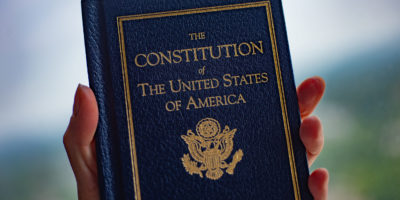Bill Clinton may have been lionized as the “first black President,” and Barack Obama actually was half African, but no politician in American history owes more to African-American leadership and voters than Joe Biden. His campaign never smoldered, much less caught fire, until he was embraced by South Carolina’s heavily black Democratic electorate. African Americans paced his path also through states such as Texas, where he did far less well among whites and Latinos.
Yet will this triumph at the polls translate to a better life for most minorities, most of whom are working-class or poor? It depends which minorities. Biden’s commitment to healing the “sting of systemic racism” and repudiating “white supremacy” will certainly benefit the elite minorities—actors, lawyers, professors, media figures, corporate apparatchiks, non-profit functionaries—whose careers will be super-charged by demands that people be appointed to high office by race.
Viruses have no known biases, but even the pandemic cannot escape the taint of “systemic racism.” States like California are basing their re-opening policies on whether the infections and fatalities can be equalized by race, despite differences between races in health factors, housing, and work life. Some at the CDC, many state officials—including in overwhelmingly white Oregon—and numerous academic health experts have even suggested minorities get vaccinated first as a demonstration of “racial justice,” even if it threatens the most vulnerable, but grievously whiter populations of seniors.
The “Talented Tenth” v. the Vast Majority
But what about the vast majority of African Americans and Latinos? Even in the best of times, back in February, our economy was failing many of these minorities, as well working people in general. Corporate mea culpas about racism and solidarity with BLM may blunt criticism, but assertions of guilt don’t address the fundamental problem of diminished expectations, particularly in minority and working-class communities that continue to suffer economic distress and hopelessness. Minorities make up over 40% of the nation’s working class and will constitute the majority by 2032.
In writing about African-American progress, the great 20th-Century philosopher W.E.B. Du Bois embraced the notion of “the talented tenth”—the educated upper stratum of black America—as the primary vehicle for social change. Others with a more popular touch embraced either the crude nationalism of Marcus Garvey or the ameliorative, grassroots improvement approach of Booker T. Washington.
The elitist vision of minority outlook was epitomized by the Obama Administration, where African Americans and other “people of color” enjoyed enormous influence and access while the conditions for middle- and working-class minorities generally declined. Minorities with elite degrees flourished, but policies that protected banks and targeted homeowners wiped out much black and Hispanic wealth. “The first black president in American history,” notes the widely-read Marxist blog Jacobin, “ turned out to be a disaster for black wealth.”
Just as traditional liberalism has stopped benefitting the majority of workers, the new progressive version seems likely to fail even more spectacularly. A Biden Administration may coo more and say the “right” things, but it is unlikely to replicate the remarkable success, pre-COVID, of the Trump years, where minority unemployment hit record lows and the incomes of the least grew faster, for the first time in decades, than those of the upper classes. Indeed in a host of areas—starting with energy policy—the Administration embraces blue state priorities that often work against minority uplift and leave most abandoned on the edges of our society.
What Works—And What Does Not
For all that President Biden’s inspiring talk of unity represents a necessary salve after the often-excessive divisiveness of Trump, the new Administration’s focus on “systemic racism” simply nationalizes the race-based politics common in those areas, like California and New York, that now have control of the federal apparat. These policies—from affirmative action to Maoist “struggle sessions” reborn in corporate seminars—have catapulted minorities into important-seeming jobs but have brought little actual progress to most in minority communities. As the activists and their corporate sponsors preen over “defunding police,” it is predominately minority communities who face the greatest threat from renewed levels of violent crime in cities such as New York.
But, as demonstrated in a recent report for the Urban Reform Institute, generally speaking minorities have done much better—in terms of income and homeownership—in deep red states and regions than in the more “enlightened” blue regions. In fact, among larger metropolitan areas such as Washington, D.C. and Atlanta, the median African-American income, adjusted for costs, is more than $60,000—compared to $36,000 in San Francisco and $37,000 in Los Angeles. The median income for Latinos in Virginia Beach-Norfolk is $69,000, compared to $43,000 in Los Angeles, $47,000 in San Francisco, and $40,000 in New York.
One critical measure can be seen in homeownership. Property remains key to financial security: Homes today account for roughly two thirds of the wealth of middle-income Americans. Homeowners have a median net worth more than 40 times that of renters, according to the Census Bureau. Yet in some parts of the country, notably California and the Northeast, housing prices are often out of reach for most minorities. Black home ownership in areas like Atlanta and Oklahoma City borders on 50%, compared to one third in Los Angeles, Boston, or New York. Among Hispanics, Pittsburgh, Akron, and St. Louis stand out while the least affordable housing markets include the four large California metros, Honolulu, and Boston.
Minorities may still vote blue, but they are moving red. African-American populations are stagnant or even declining in places like New York, San Francisco, Los Angeles, Seattle, and Portland (whose city council is demanding reparations for the very people who have been pushed out of the city) while rising in many red state metros. Minorities are also becoming suburbanites: In the 50 largest US metropolitan areas, 44% of residents live in racially and ethnically diverse suburbs, ranging from 20% to 60% non-white. Nationwide, in the 53 metropolitan areas with more than 1,000,000 residents, more than three quarters of blacks and Hispanics now live in suburban or exurban areas. More than a third of the 13.3 million new suburbanites between 2000 and 2010 were Hispanic, with white non-Hispanics accounting for a mere fifth of suburban growth.
The Pandemic Effect
To be sure, minorities had ample reasons to dislike Trump, whose more unhinged racially charged outbursts appealed to the very toxic white nationalists who ended up sinking his legacy. There is certainly more support for liberalized immigration than many hard-core Trumpistas suspect. But the fact that he managed to pick up a larger share of minority voters in 2020 suggests there is a market for growth-oriented policies and against the squelching of the grassroots economy.
The pandemic has inflicted intense economic pain on most minorities. Lockdowns, whether justified or overwrought, have pummeled low-income workers and those living in crowded housing. Roughly half of all job losses in April were in such low-paying fields as restaurants, hotels, and amusement parks. Minorities have been far less able to work remotely than tech workers, stock traders, and media figures. Barely 3% of low-wage workers can telecommute, but nearly 50% of those in the upper middle class can. Workers at restaurants and shops may face hard times, but professors and teachers generally continue to teach online and senior bureaucrats remain employed.
Almost 40% of those Americans making under $40,000 a year have lost their jobs and watched wage gains from the first three years of the Trump Administration evaporate. Some 44% of black households and 61% of Latino households, notes Pew, have suffered a job loss or pay cut compared to 38% of whites. “Lockdown fanatics,” thunders the widely-circulated “labor populist” blog The Bellows, “ have helped manufacture consent for a brutal reorganization of labor that will plunge millions of people into serfdom.”
The Political Prospect
The woke brand of race politics now being injected into the Biden Administration is not particularly popular. The vast majority of all races, noted a 2018 survey, reject the woke Manichean “anti-racist” meme and scorn political correctness, even as it is widely adopted by the billionaire class and corporate HR departments. Generally, minorities do not want to turn away from law enforcement; the vast majority of Americans—including millennials and minorities—do not favor defunding the police, even as these policies are pushed in their name.
Some politicians and progressive intellectuals have excused looting as a form of racial redress, although many victims of “no justice, no peace” are themselves minority business owners and their employees. Similarly, among the general public and many minorities, racial quotas are not particularly popular—as evidenced in the recent defeat this November, in deep blue California, of a proposition to introduce racial preferences (even though opponents were charged with defending “white nationalism”).
What minorities and working-class people in general—a majority of whom will be non-white by 2030—need is not more Maoist “struggle sessions” but pro-family, pro-growth policies for the broad working class. Policies that transform schools into factories to combat “”—with little emphasis on skills or discipline—will not nurture the kind of workforce that can move up.
One has to wonder how employers will regard students coming out of systems such as that of San Diego, which is busily getting rid of mandates for such things as knowing course material, taking tests, doing work on time, or even showing up (all these, the district insists, are “racist” in nature). This is part of a racially charged effort to dumb down education: deemphasizing tests, excusing bad behavior, targeting selective high schools for extinction, politicizing education schools, and imposing ideology on often ill-educated students.
Similarly, regulations that drive industries out of the country by raising energy prices will not affect grievance studies professors at the local university. But they could impact union jobs at the factories, or the energy and logistics facilities which often employ minorities. Having groups like the Realtors announce a drive to wipe out “hate speech” may make woke association executives self-satisfied, but it won’t help people leave dysfunctional neighborhoods, create affordable housing, or speed the path to homeownership.
Ironically, the obsession with “systemic racism” is likely to spark a growing white nationalist reaction. As Michael Lind and others suggest, policies which focus on “white privilege” seem destined to further elicit resentment from those who carry original sin, according to the media and much of the political class, from sharing DNA with “settlers” and slaveowners—although the majority of Americans come from families that emigrated after the Civil War. Crowing about “the end of white America” might be popular in ethnic studies department but won’t bring a better life for most minorities.
The war on “American exceptionalism” now being waged on Biden’s Congressional Left is no substitute for a common broadly unifying message. People, even white people, cannot be appealed to indefinitely by suggesting they are evil by nature of their racial history and skin pigmentation. This near-apartheid obsession with racist categories makes increasingly little sense in a country where one in ten babies has one white and one non-white parent, and 12% of all African Americans are now immigrants from Africa, the Caribbean and elsewhere.
The key to addressing our racial and other divides, notes Richard Parsons, former President of Citigroup, lies not with racialist redress but with economic growth and opportunity. There will never be “unity,” he suggests, until people “feel it in their pockets.” A national campaign for racial penance may thrill the woke glitterati and corporate timeservers, but such moralism is unlikely to make things any better for most minorities. Americans of all colors cannot rise unless we see the American future not as a zero-sum game among diverse people but one that extends the American dreamscape to citizens of all races.











